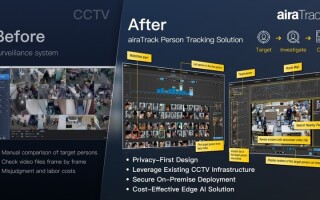u-blox Releases Two Bluetooth AoA Explorer Kits for High Precision Indoor Positioning
July 07, 2021
News

u-blox announced the release of two "explorer kits" aimed at allowing product developers the ability to evaluate the potential of Bluetooth direction finding and high precision indoor positioning.
The u-blox XPLR-AOA-1 offers all the required modules to evaluate AoA technology. Functions include detecting whether a person or an object is approaching a door, avoiding collisions between moving objects, and directing a camera at a moving tag.
The kits comprise of four u-blox C211 antenna boards, four u-blox C209 tags, and the required software to leverage AoA technology for diverse applications.
The u-blox XPLR-AOA-1 and XPLR-AOA-2 explorer kits is one of the first complete Bluetooth-based tracking solutions. They can track from the tag to the cloud and able to reliably offer sub-meter-level precision in indoor environments.
Designed for low power consumption, simple deployment, and low cost of ownership, the u-blox XPLR-AOA-1 and XPLR-AOA-2 explorer kits make it simpler to test the technology's capability:
- access control
- collision detection
- smart appliances
- indoor positioning
- asset tracking.
Both explorer kits use the u-blox NINA-B4 Bluetooth 5.1 low energy module featuring Nordic Semiconductor's nRF52833 Bluetooth® Low Energy System-on-Chip (SoC).
Running on the SoC's embedded MCU, u-blox u-connectLocate software calculates the angles of the incoming signals with no additional processing required. In the case of the XPLR-AOA-2, a positioning engine software is included to triangulate the position of the tag.
Bluetooth direction finding makes it feasible to verify the direction the radio signals are traveling from a mobile tag to one, or several, fixed anchor points. Using angle-of-arrival (AoA) technology, anchor points comprising of an antenna array is connected to a Bluetooth receiver and detects the direction, or angle, to the mobile tag, which then transmits a Bluetooth signal. When multi-antenna anchors are deployed, AoA technology can be used to zero in on the precise location of a mobile device or tag.
u-blox is collaborating with Traxmate, to offer a hardware-agnostic, cloud-based tracking system that makes it easier to set up the tracking environment, create buildings, upload floor plans, and specify the placement of the anchor points.
For more information, visit: u‑blox.com.





